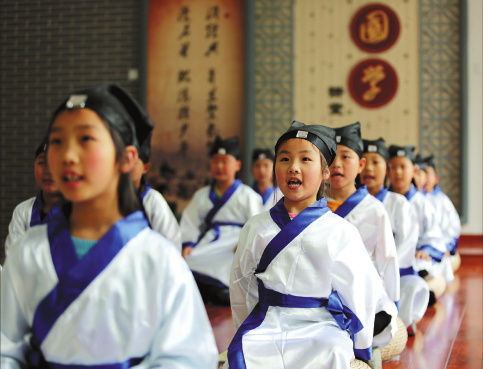 |
| Children recite Chinese literature. |
After somersaults and handstands, little kungfu champion Li Zhongzhou falls to the ground like a drunken man. Moments later he jumps up and leaps into the air as he strikes various moves.
Nicknamed "little Bruce Lee", the 11-year-old champion of many national martial arts contests was comparing moves with classmates during an interval between classes in Tangshi Primary School in Zhangjiagang city, eastern Jiangsu province.
"We picked up martial arts at our school and I have been learning for two years," Li said, timidly bowing his head. That's when his father came to work as a porter in Zhangjiagang.
"I can also perform street dance and play basketball."
As more Chinese villagers rush to cities for work amid rapid economic growth and urbanization, how to help their children get equal educational opportunities has long been a problem that concerned experts.
Yet in Zhangjiagang city, Tangshi Primary School offers an example of equal education.
Located in Yangshe town of Zhangjiagang city, where many industrial operations are based, about 70 percent of the 2,563 students of the school are children of "new citizens" who come from 22 provinces and mainly work in industrial parks and factories.
Their children are given the same subsidies, scholarships and teaching resources as local children. They also enjoy the same extra-curricular activities and sessions.
"Making sure these flowing flowers that travel with their parents here and there enjoy the same education as their peers in the city is the best part of our school," said Principal Chen Jing.
Tangshi just moved to its new 200 million yuan ($32.9 million) campus set amid gardens and ancient-style beauty.
With bright classrooms, big libraries, modern sports grounds and an Internet network, young children have access to the most advanced facilities that even some colleges don't offer.
But more important is that their creative ideas are valued and various interests are explored, said Chen.
Twice a week teachers from the city's Children's Palace-where students attend cultural activities after school-arrive and run free sessions on 59 kinds of skills that students can choose according to their own interests. The training ranges from modern art to traditional culture such as calligraphy and embroidery.
